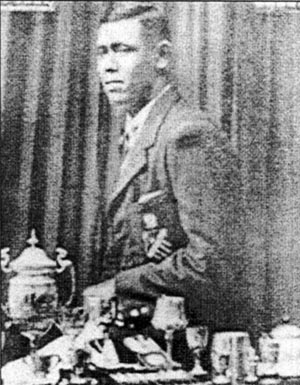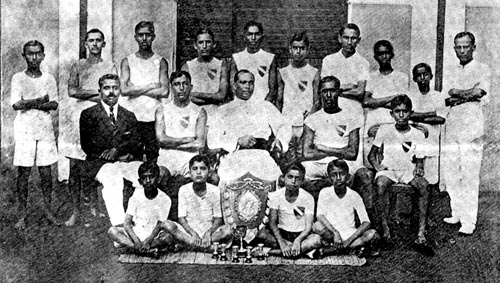Noteworthy boxing history of St. Anthony’s College, Kandy
View(s):
L.V. Jayaweera, the most decorated Antonian in boxing and cricket
Boxing was introduced to the schools in Ceylon during the first decade of the 20th century. Two old boys, Cyril E.S. Perera (later Queen’s Counsel and MP for Colombo North) and M.J. Taylor, were instrumental in bringing the game to St. Anthony’s College, Kandy, inspired by L.M.D. Robinson, a lecturer at the Government Training College.
St. Anthony’s was fortunate to obtain the services of the famed boxing trainer, John Gaye. Boxing had become so popular that it was hard to decide which of the two games, cricket or boxing, was more popular, with a large number of athletes taking up the sport.
In the Stubbs Shield Meet, which started in 1914, St. Anthony’s participated for the first time in 1918 and became the runners-up with 13 points, following Trinity’s 19 points. The following year, St. Anthony’s avenged the defeat to win the coveted Stubbs Shield for the first time. In 1919, Jack Glanville, N.H. Keerthiratne (later a cabinet minister), and Robert Wright, also the Antonian cricket captain of 1919 and a respected teacher at the college in the latter years, won all their fights.
St. Anthony’s retained the shield in 1920 with Greig Meynert, Keerthiratne, N. Rodrigo and Jack Glanville defeating all their opponents, while Austin Williams lost in the final. ‘The Antonian’ the college magazine of 1924, recorded the excellent performance of the three Ratwatte brothers, especially the youngest, Sidney, who won all his matches. St. Anthony’s finished second in the tournament.
Billy Forsyth won the finals of Light Heavyweights. In 1922, Dicky Tennant, S.V. de Alwis and N. Rodrigo were unbeaten, and the school came second in the Stubbs Shield. In the following year, fielding a side with a number of newcomers, the school was placed third behind the top teams Trinity and S. Thomas’. Ronald Stephens and Rodrigo won in their bouts in respective weight categories. The school won the Stubbs Shield for the third and the last time in 1924.

The St. Anthony’s boxing team of 1920 with the Stubbs Shield
The Antonian boxers had their heyday during this era, as in a matter of a few years, they reached a very high standard, and some of them gained recognition as All-Ceylon champions. L.V. Jayaweera, Robert Wright, N.H. Keerthiratne, Jack Glanville, S.V. de Alwis, Dicky Tennant, James Ferguson, Austin Williams, C. Radcliffe, V. Rosayro, Bill Forsyth, Albert Victor, Ronald Stephens, N. Rodrigo and Bede Perera to name a few of the Antonian boxing ring.
St. Anthony’s had the distinction of producing as many as eleven champions in the Ceylon boxing ring since 1921.
H.A. Albert Victor won the Pinweight, the Under 102lbs weight category, in 1925 and 1926, while R. Tennant claimed the Flyweight, Under 112lbs weight category in 1923 and 1924, following N.H. Keerthiratne’s achievement in 1922 in the same weight class.
Jack Glanville claimed the Bantamweight, the Under 118lbs weight class, in 1921 and 1922, while the famed L.V. Jayaweera claimed the Lightweight, Under 135lbs weight class in 1923 and 1924 in addition to claiming the Welterweight, Under 148lbs, later in 1927. S.V. de Alwis made the school proud by winning the Featherweight, of Under 126lbs, in 1931.
The school produced a ‘knockout king’ in Robert Wright, who was a dread for the other schools, having tasted defeat only once in his entire career. L.V. Jayaweera, also cricket captain in 1921, was undoubtedly the most accomplished boxer to come out from St. Anthony’s. Among his fleet of titles were the Featherweight in 1923, the Lightweight in 1924 and 1925, the Welterweight in 1927, the Welterweight champion at the Ceylon Defense Force Meet, before being picked to represent Ceylon at the All-India Boxing Meet in 1928. In 1930, he earned the ‘Fellow Gordon Cup’ presented to the Most Scientific Boxer.
Sadly, the game started to fade away from the minds of the Antonians in the early 1930s and sank into oblivion thereafter, least expected in a school that was a powerhouse in boxing in the early years.


